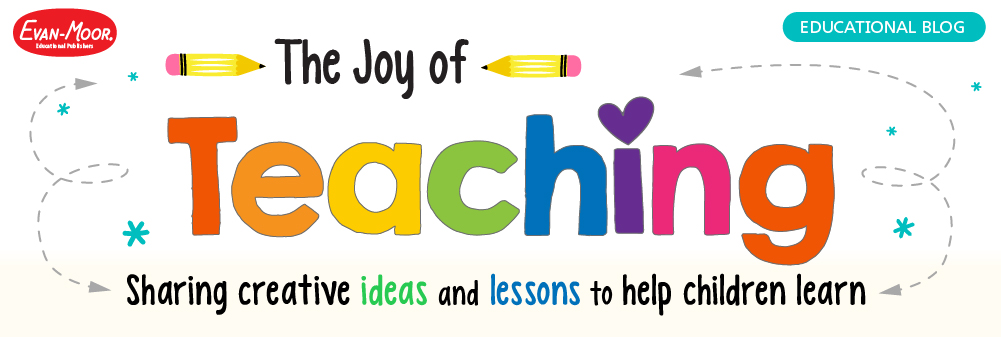February is American Heart Month! As a parent or teacher, how do you help children learn about a heart-healthy lifestyle? Begin with activities that help children understand how their heart works and share healthful habits. Here are a few ideas:
Healthy Heart Classroom Activities
 Grades PreK–K: Taking Care of My Body
Grades PreK–K: Taking Care of My Body
This reproducible book is for children to color, cut out, and take home, and includes an activity to determine whether an action is healthy or not. From Early Childhood Thematic Series
 Grades K–1: Heart and Lungs
Grades K–1: Heart and Lungs
This science unit provides activities on the body’s heart and lungs, plus an experiment about how much air is in our lungs. From Science Works for Kids: Learning About My Body
 Grades 1–3: The Heart Pumps Blood
Grades 1–3: The Heart Pumps Blood
This unit includes information on the circulation system, directions for conducting experiments and activities, and a minibook. From Science Works for Kids: How Your Body Works
 Grades 4–6: The Heart and Lungs Work Together
Grades 4–6: The Heart and Lungs Work Together
This unit about the human body encourages students to conduct three experiments on how the heart and lungs work together. From Science Works for Kids: The Human Body
Healthy Cooking with Kids
 The American Heart Association has a plethora of helpful information on their site, including the Cooking with Heart for Kids demonstration. Download the free guide for instructions and talking points to hold a hands-on cooking demonstration (in the classroom or at home). Plus, the guide includes healthy eating recommendations and two simple recipes to make with kids, such as the Green Monster Smoothie.
The American Heart Association has a plethora of helpful information on their site, including the Cooking with Heart for Kids demonstration. Download the free guide for instructions and talking points to hold a hands-on cooking demonstration (in the classroom or at home). Plus, the guide includes healthy eating recommendations and two simple recipes to make with kids, such as the Green Monster Smoothie.
Healthy Reading for Kids
This PBS Parents’ site provides a great book list for Healthy Reading for Kids. The books are suitable for toddlers up to 3rd graders.
 Theresa Wooler has more than 10 years’ experience in K–6 classrooms as a parent volunteer and homeschool educator, has taught high school English, and is currently involved in education through Evan-Moor’s marketing communications team.
Theresa Wooler has more than 10 years’ experience in K–6 classrooms as a parent volunteer and homeschool educator, has taught high school English, and is currently involved in education through Evan-Moor’s marketing communications team.









 While the origins of Valentine’s Day are murky, historians trace the exchange of Valentine cards and other greetings to the Middle Ages. Keep the tradition alive with these free Evan-Moor templates for Valentine cards, plus heart-themed activities for your students to complete on February 14. Happy Valentine’s Day!
While the origins of Valentine’s Day are murky, historians trace the exchange of Valentine cards and other greetings to the Middle Ages. Keep the tradition alive with these free Evan-Moor templates for Valentine cards, plus heart-themed activities for your students to complete on February 14. Happy Valentine’s Day!





 Quality Lessons and Activities – Nothing beats quality, and Evan-Moor’s standard for quality lessons is like no one else. To me, a quality activity gets kids interested in meaningful learning, rather than boring worksheets that squash kids’ natural curiosity. Evan-Moor provides activities to keep kids focused and learning. Win for kids. Win for parents, too!
Quality Lessons and Activities – Nothing beats quality, and Evan-Moor’s standard for quality lessons is like no one else. To me, a quality activity gets kids interested in meaningful learning, rather than boring worksheets that squash kids’ natural curiosity. Evan-Moor provides activities to keep kids focused and learning. Win for kids. Win for parents, too!


















 These ideas are from Evan-Moor’s
These ideas are from Evan-Moor’s  Do you have kids who enjoy learning about animals? When kids are interested in a topic, their motivation is golden!
Do you have kids who enjoy learning about animals? When kids are interested in a topic, their motivation is golden!
 Amy Michaels is a certified teacher with 11 years of elementary classroom experience who is actively homeschooling her own children. Her mission is share the best teaching methods and resources with all homeschoolers. Amy supports parents through her podcasts, webinars, and online training for homeschoolers on her website http://www.thrivehomeschooling.com.
Amy Michaels is a certified teacher with 11 years of elementary classroom experience who is actively homeschooling her own children. Her mission is share the best teaching methods and resources with all homeschoolers. Amy supports parents through her podcasts, webinars, and online training for homeschoolers on her website http://www.thrivehomeschooling.com. It is the time of year when most families take the time to reflect on being grateful. Here is a fun way to get your children engaged in writing while learning gratitude. Sound too good to be true? It really is pretty simple.
It is the time of year when most families take the time to reflect on being grateful. Here is a fun way to get your children engaged in writing while learning gratitude. Sound too good to be true? It really is pretty simple.